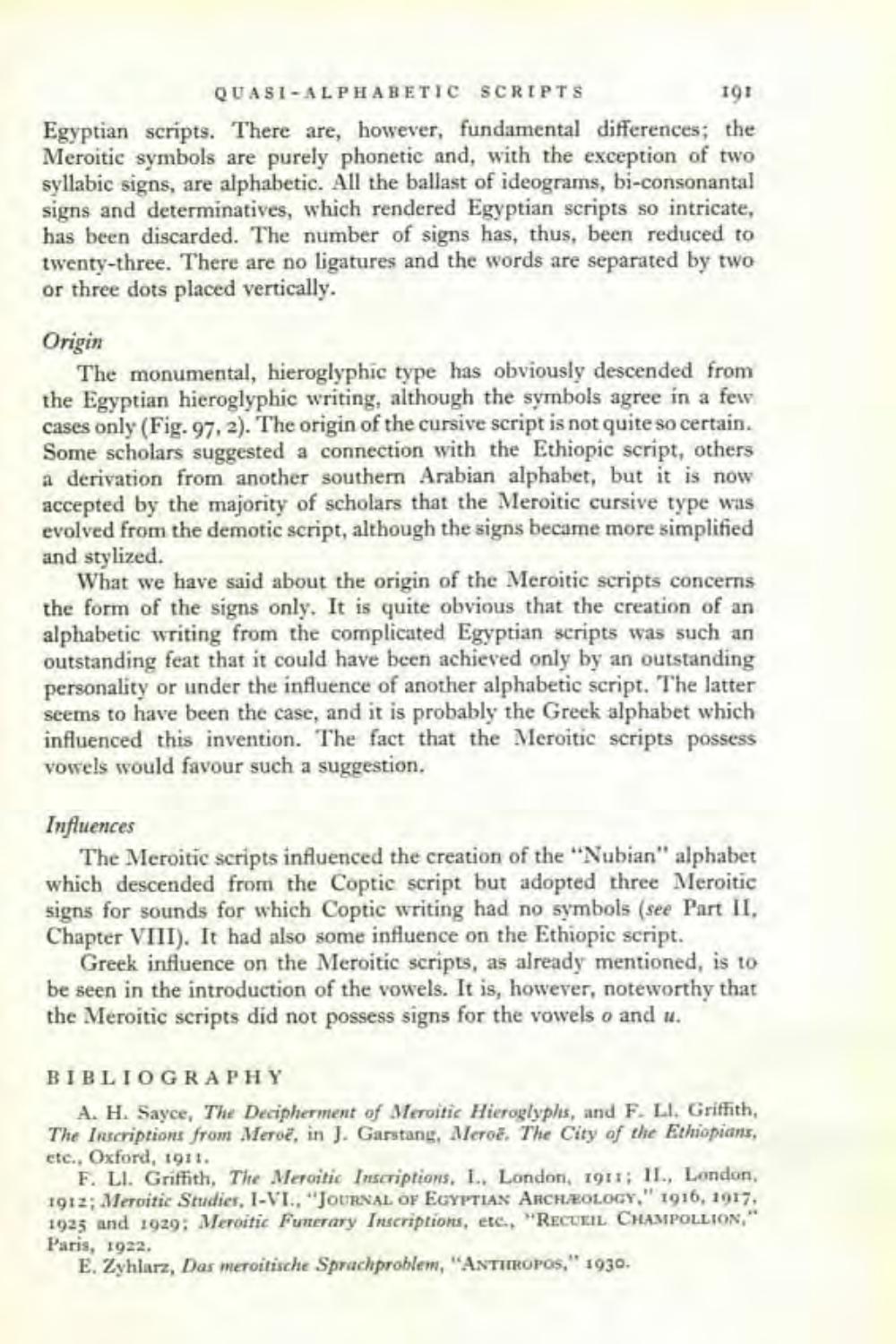________________
191
QUASI-ALPHABETIC SCRIPTS
Egyptian scripts. There are, however, fundamental differences; the Meroitic symbols are purely phonetic and, with the exception of two syllabic signs, are alphabetic. All the ballast of ideograms, bi-consonantal signs and determinatives, which rendered Egyptian scripts so intricate, has been discarded. The number of signs has, thus, been reduced to twenty-three. There are no ligatures and the words are separated by two or three dots placed vertically.
Origin
The monumental, hieroglyphic type has obviously descended from the Egyptian hieroglyphic writing, although the symbols agree in a few cases only (Fig. 97, 2). The origin of the cursive script is not quite so certain. Some scholars suggested a connection with the Ethiopic script, others a derivation from another southern Arabian alphabet, but it is now accepted by the majority of scholars that the Meroitic cursive type was evolved from the demotic script, although the signs became more simplified and stylized.
What we have said about the origin of the Meroitic scripts concerns the form of the signs only. It is quite obvious that the creation of an alphabetic writing from the complicated Egyptian scripts was such an outstanding feat that it could have been achieved only by an outstanding personality or under the influence of another alphabetic script. The latter seems to have been the case, and it is probably the Greek alphabet which influenced this invention. The fact that the Meroitic scripts possess vowels would favour such a suggestion.
Influences
The Meroitic scripts influenced the creation of the "Nubian" alphabet which descended from the Coptic script but adopted three Meroitic signs for sounds for which Coptic writing had no symbols (see Part II, Chapter VIII). It had also some influence on the Ethiopic script.
Greek influence on the Meroitic scripts, as already mentioned, is to be seen in the introduction of the vowels. It is, however, noteworthy that the Meroitic scripts did not possess signs for the vowels o and u.
BIBLIOGRAPHY
A. H. Sayce, The Decipherment of Meroitic Hieroglyphs, and F. LI. Griffith, The Inscriptions from Meroë, in J. Garstang, Meroe. The City of the Ethiopians, etc., Oxford, 1911.
F. LI. Griffith, The Meroitic Inscriptions, I., London, 1911; II., London, 1912; Meroitic Studies, I-VI., "JOURNAL OF EGYPTIAN ARCHAEOLOGY," 1916, 1917, 1925 and 1929: Meroitic Funerary Inscriptions, etc., "RECUEIL CHAMPOLLION," Paris, 1922.
E. Zyhlarz, Das meroitische Sprachproblem, "ANTHROPOS," 1930.




